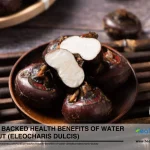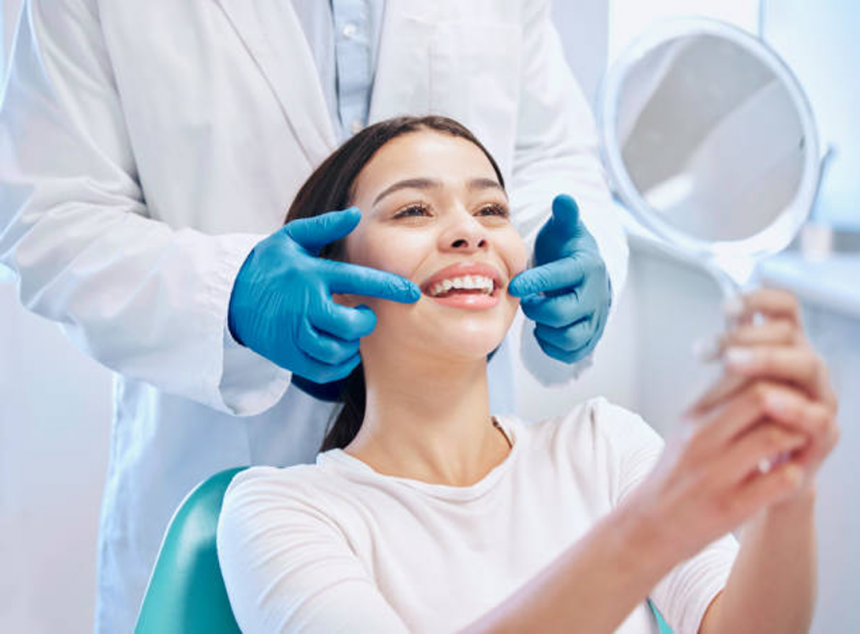Your first line of defense is brushing thoroughly at least twice a day and flossing once a day. Spend a minimum of five minutes each day to clean all tooth surfaces, especially those between the teeth. Rinsing well is important plain water is fine. Mouthwash is unnecessary, unless for some reason you use non-fluoridated toothpaste and thus need a fluoridated mouthwash.
The right way to brush
After applying paste to the bristles, start with the brush at a 45 degree angle against the tooth at the gum line, catching the biting edge under the outside row of bristles. You can use a circular brushing motion or a straight downward one.
Brush the gum line as well as the teeth. Be sure you brush all chewing surfaces thoroughly: Hold the brush vertically to reach the inside surfaces of the front teeth. Be sure the head of the brush is not too large to fit into the back of the mouth.
Don’t over brush, however. At least 10 percent of people brush too hard, which can cause “tooth brush abrasion” and lead to sensitive teeth, receding gums, and wear around the roots. If you clench or grind your teeth, they are even more vulnerable to over brushing. A brush with bristles that are too stiff is often the problem. Dentists recommend soft-bristled brushes, yet many brushes sold in the United States have medium or hard brisdes. Use a gentle grip (not a fist) when brushing and don’t press hard.
The right toothbrush
The most important feature of a toothbrush is the bristles, which should be soft, so that vigorous brushing won’t injure the gums. The toothbrush should also be new enough to clean teeth and gums effectively. Choose any size or shape brush head that best allows you to get at hard-to-reach places in your mouth. Some people find a child-size toothbrush does the job best. Others like a bigger model.
There’s no evidence that rippled bristles or tapered heads or other innovative toothbrush designs are more effective than conventional toothbrushes in keeping your teeth clean. Handle design doesn’t matter. And buy by price: An inexpensive brush can do as good a job as a costly one.
If you have some condition that limits your dexterity, or if you particularly like high-tech gadgets, or if you are trying to motivate a child to brush, you might want to invest in an electronic or sonic toothbrush.
Discard your old brush at least every three months or whenever the bristles begin to look worn. Keep a supply of brushes in the house so you can change frequently.
The right toothpaste
Toothpaste isn’t essential for cleaning your teeth it’s the brushing action, not the paste itself that removes plaque and cleans the teeth. Mild abrasives in toothpaste also help with the cleaning. But the biggest advantage toothpaste offers is that if it contains fluoride, it gives you proven protection against cavities. Always buy fluoridated toothpaste that bears the seal of the American Dental Association, or ADA. This means that it has been evaluated as safe and effective at preventing tooth decay. (Parents should always supervise small children to make sure they don’t swallow toothpaste, since fluoride in large amounts can be toxic to children.)
A tartar-control paste
A tartar-control paste may be a good choice, though no paste controls tartar below the gum line. Brushing with any toothpaste (or even without paste) will help control tartar, but eventually you’ll need a professional cleaning.
Baking soda toothpastes
Baking soda toothpastes are as good as any other toothpaste so long as they contain fluoride. The same is true of plain baking soda a good tooth cleaner, but you should probably use a fluoride rinse along with it.
Anti-gingivitis toothpaste
An anti-gingivitis toothpaste containing a disinfectant called triclosan (Colgate’s Total) has been shown to reduce both plaque and gingivitis (the first stage of periodontal disease).
Desensitizing toothpastes
Desensitizing toothpastes contain strontium chloride or potassium nitrate to block pain transmission and can help if your teeth are sensitive to heat or cold. But check with your dentist to make sure that you has no underlying problem. It may take two or three weeks for the desensitizing effect to begin.
Whitening toothpastes
Whitening toothpastes contain various agents that may remove some stain. But none of these pastes will whiten your teeth significantly. If you serious discoloration, see your dentist.
Toothpastes with “natural” ingredients
Toothpastes with “natural” ingredients are okay, too, as long as they have fluoride and the ADA seal. In spite of their claims, they offer no special benefits for dental hygiene.
A new toothpaste called Enamelion claims to reduce tooth decay by “remineralizing” teeth using calcium and phosphate along with fluoride to not only prevent cavities, but repair tiny lesions on tooth surfaces before they become visible. How effectively it works on healthy people hasn’t been established by clinical trials. But the paste has been shown to reduce cavities in people at high risk for tooth decay (for example, that undergoing radiation therapy). A remineralizing paste could be helpful for those at high risk for cavities or with sensitive teeth. But it is not a substitute for thorough brushing and flossing.
The right way to floss
Think of floss as an extension of the brush, a means of cleaning surfaces that the brush can’t reach. Take a length of floss and wind the ends around your index fingers, so you can hold it taut, unwinding and winding as you go, in order to have a clean section of floss for each tooth. Slip the thread gently between the teeth and under the gum line.
Remember you’re after the plaque on the side of the tooth. When you reach the gum line, curve the floss into a C shape and slide it carefully between tooth and gum until you feel a resistance. Pull the floss vertically along the side of one tooth, pull it out, and then reinsert it for the side of the adjacent tooth. Avoid pulling it back and forth. Go between all the teeth, and don’t forget the backs of your molars.
Though few people like to do it, flossing should be painless. It does require practice if you aren’t accustomed to it. If your gums bleed at first, keep on flossing the bleeding should subside as your gums get used to the procedure. If you have sharp edges or other problems that make it difficult to floss, ask your dentist to smooth over the sharp spots and check to see if any fillings are cracked.
The right floss
Use any kind you prefer waxed or unwaxed, flavored or unflavored. There’s no evidence unwaxed floss does a better job. Waxed floss slips more easily between teeth and is less likely to fray or break. If your teeth are tightly spaced, you might like a brand such as Glide or Precision, made of Teflon like, shred proof material. Either of these is less likely to fray and may thus be worth the higher price.
Sugar and teeth
Limit the amount of sweets you consume, or at least brush as soon as possible after eating them. This is particularly important for older people, whose roots may be exposed. Sugar is particularly hard on dental enamel.
Mouthwash
You can use a mouthwash if you wish or if your dentist has directed you to do so, but the great majority of nonprescription mouth rinses are simply temporary breath fresheners. They have little effect against plaque (the thin film on teeth where decay-causing bacteria live), and they don’t prevent gingivitis. Fluoride, which prevents tooth decay, can be effectively delivered in a mouthwash, but fluoride does not prevent gingivitis.
No mouthwash can take the place of regular brushing and flossing. If you want to temporarily freshen your breath or because you like the taste, any mouthwash will do. The only over the counter mouthwash with the ADA seal in the battle against plaque and gingivitis is Listerine. If you have periodontal disease, your dentist may prescribe Peridex or Periogard mouth washes, which contain an antibacterial ingredient.
Dental appliances
You’ll find a huge range of products for sale to help you with home dental care, including stimulators, rubber tips, interdental brushes, floss holders, toothpick holders, irrigators, and electric toothbrushes. If any of these appeal to you or solve specific problems, or if you have been advised by your dentist to purchase and use any of these items, they are fine. Before using rubber tips and stimulators, or any item that poses a risk of gum injury if improperly used, ask your dentist or hygienist for instructions. However, none of these things can take the place of regular brushing and flossing and regular professional dental care.





